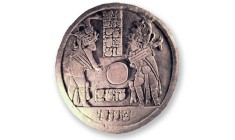Yates, D. (2006) ‘South America on the Block: The changing face of Pre-Columbian antiquities auctions in response to international law’. MPhil dissertation. University of Cambridge.
Yates, D. (2006) ‘South America on the Block: The changing face of Pre-Columbian antiquities auctions in response to international law’. MPhil dissertation. University of Cambridge.
This dissertation explores the divisive and complicated issue of modern antiquities auctions. Through an in depth exploration of Sotheby’s auction
catalogues, this study will expose for the first time the recent trends in the public sale of South American antiquities. This dissertation is an answer to a challenge. In their
2000 and 2001 studies of Classical antiquities catalogues, Chippindale and Gill called on the archaeological community to quantify antiquities auction data for classes of artefacts that were beyond the scope of their study. Only by doing so, they asserted, will we ever understand the particulars of the antiquities market and thus be able to devise effective means of discouraging looting, smuggling, and the purchase of unprovenienced antiquities.
This study does deviate from all those conducted before it. Unlike in previous studies, the under-explored aspect of money will play a key roll in this analysis: a first for the research of antiquities auction catalogues. The unexpected availability of sale price data for all of the catalogues in this study has made this possible. In this dissertation, the particulars of the South American antiquities market will be gauged using a number of methods and the price buyers are willing to pay for artefacts will be determined. As the price antiquities fetch on the market is directly related to the rate at which a country’s heritage will be looted, I feel that market value and demand should play and important roll in further quantitative antiquities catalogue and auction analyses.
Through the creation of a database compiled from 19 years of data from Sotheby’s South American antiquities auctions, this study will address the complicated issues of provenience and authenticity of lots presented in the catalogues. Taking things a step further, the issue of demand will be explored and market trends will be discussed in light of the various international agreements and public scandals that shook the art world from 1986 until 2005. This study fills a significant geographic gap in our knowledge of the international antiquities market and should be considered a springboard into further analysis of the trade in South America’s material past. Though assumed to be highly collectable and notorious for fetching high prices on the international market, little is actually known about the demand for South American antiquities. The endemic nature of the looting of South America indicates that this project is both timely and necessary.
